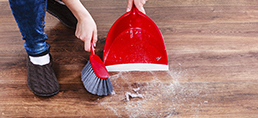
Sniffling.
Sneezing.
Itchy, watery eyes.
If you’re an allergy sufferer, you know all too well: ‘tis the season.
But spring and summer is also the season for getting outside in the warmer temperatures–something even those with allergies should be able to enjoy.
Ted Kelbel, MD, section chief of allergy and immunology at Corewell Health in West Michigan, said there are a lot of allergy treatment options to make that possible.
The biggest culprit for allergies in Michigan–in the spring and even beyond–is pollen, Dr. Kelbel said.
Tree pollen typically ramps up starting in April and continues through June. Grass pollen hits in May through early July. Others strike later, including weeds in summer through fall and ragweed in mid-August through the first frost.
Unfortunately, research from the University of Michigan shows that allergy seasons are likely to become longer and more intense thanks to rising temperatures from climate change.
The study, supported by the National Science Foundation and published in Nature Communications, showed that annual pollen count could increase by up to 200 percent each year.
By the year 2100, pollen allergy season could start up to 40 days earlier and last 19 days longer, according to the research.
So, where should you turn first for help? Dr. Kelbel offered several tips for at-home allergy care.
Cut pollen exposure
Avoid known allergens as much as possible.
To avoid pollen, sleep with windows closed and air conditioning on inside whenever possible. Change your home’s air conditioning filters regularly to improve indoor air quality.
Also monitor pollen counts daily with weather apps. Pollen counts typically peak midday, so try to schedule outdoor activities in the morning or late afternoon.
When coming inside after a lot of pollen exposure, remove the clothes you wore outside and take a shower to rinse pollen from your hair and skin. And rinse your nose with a saline spray to remove allergens.
Use OTC treatments
Use over-the-counter medications. Oral antihistamines are safe and helpful to treat breakthrough symptoms, Dr. Kelbel said.
He recommends cetirizine (brand name Zyrtec), loratadine (brand name Claritin) or fexofenadine (brand name Allegra). But he said to avoid diphenhydramine (brand name Benadryl) because it has shorter duration of action and can be sedating, he said.
Patients can also purchase nasal steroids (brand name Flonase) over the counter, but they must be used regularly for relief, not as needed, Dr. Kelbel said.
Don’t forget about treating the eyes, as well. Ocular antihistamine drops are available over the counter and can provide relief.
“An expert tip is to keep them in the refrigerator as a cool drip feels great on an irritated eye,” Dr. Kelbel said.
When to seek help
If at-home care isn’t cutting it, Dr. Kelbel urged patients to stop suffering and see either their primary care doctor or an allergist. Prescription medications might provide more relief than those available over the counter.
There are two other important reasons to see an allergist, he said.
The first is for those wishing to identify their allergy triggers through testing, which can help with avoidance strategies.
The second is for those seeking allergen immunotherapy (commonly known as “allergy shots”) to control symptoms and minimize the need for medications, Dr. Kelbel said.
Allergy shots have the potential to cure the allergy long term, but it takes time to build up to the treatment dose and does require seeing an allergist, he said.
“These can be very helpful for those with significant symptoms,” Dr. Kelbel said.
Bottom line: don’t sneeze, sniffle and suffer your way through allergy season. Experiment to find what medications work for you, and seek out help from a medical provider if you need it.
 /a>
/a>
 /a>
/a>
 /a>
/a>